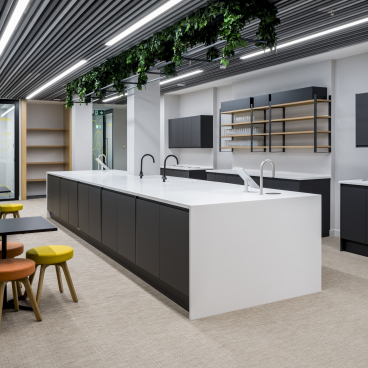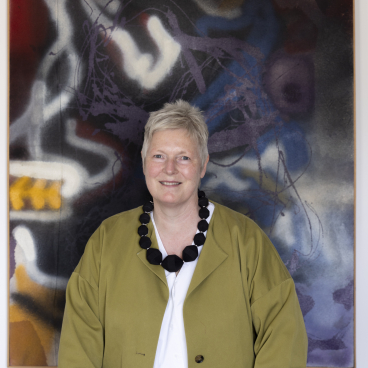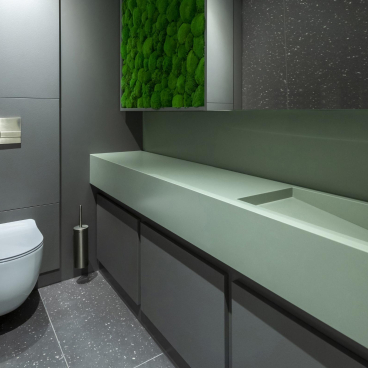How do we bring colour into circularity? In conversation with colour expert & CMF designer, Laura Perryman.
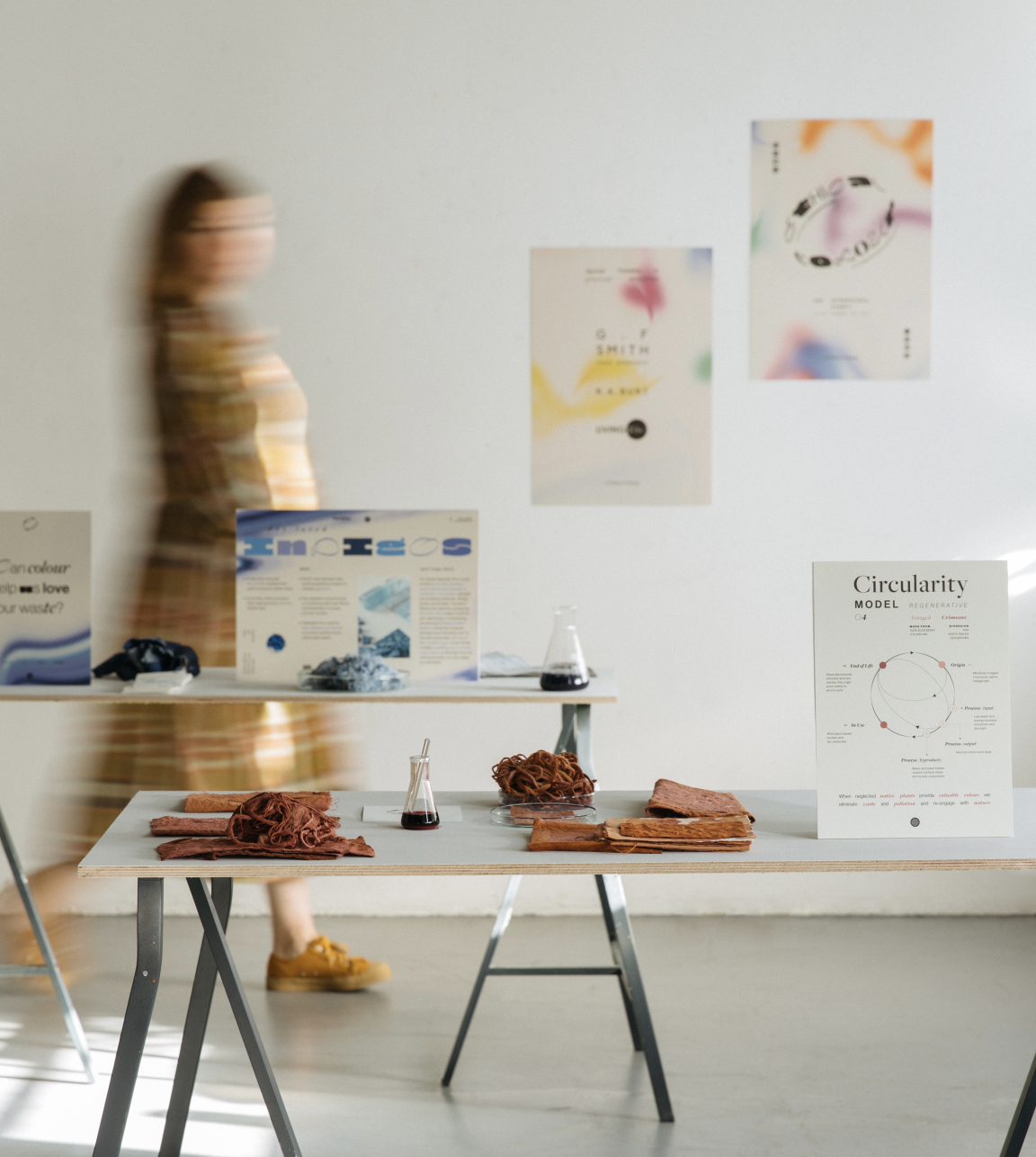
Photography by Sara Hibbert.
In the built environment alone, we are hearing the demands first hand for materials with recycled or bio-based content, local origins, as well as traceable and circular lifecycle assessments. However, how can these same demands of our materials be applied to colour?
In this exclusive interview, we hear from the groundbreaking CMF designer and celebrated colour expert, Laura Perryman from Colour of Saying on a revolutionary new strategy for colour - Ethical Colour.
Mapping progressive pigments such as bacteria grown pinks to post-consumer denim dust blues, Ethical Colour empowers designers and manufacturers across sectors to make more informed and innovative choices towards truly meaningful aesthetics. Within this regenerative spectrum are the featured projects; Slow Blues - by Slow Painting Studio, Pre-loved Indigoes by Studio Sarmite, Reclaimed Mauves by Kirstie Van Noort, Foraged Crimsons by Hannah Elisabeth Jones, Sunflower Yellows by Jess Regrave, Sea Greens by Phoebe Lewis, Living Pinks by Ruth Lloyd and Colorifix, Cultured Browns by Jesse Adler.
An esteemed team of colour and design professionals came together to bring this project into fruition including; co-editor and art director, Laura Perryman, co-editor, Sarah Conway, graphic designer, Laura Boast, photographer, Sara Hibbert and researchers, Alice Burnhope and Emilie Hartford. Plus a host of colour and material contributors, as well as sponsors - like G.F Smith.
Sitting down with Laura, we learn there is no ‘one solution fits all’ approach to achieving truly ethical colour. It requires collaborative thinking, holistic problem solving, as well as in some cases - a rebellious shift to embracing a ‘designed-to-fade’ aesthetic.
However, surely enough - we have come away from this conversation viewing colour in a truly renewable light.
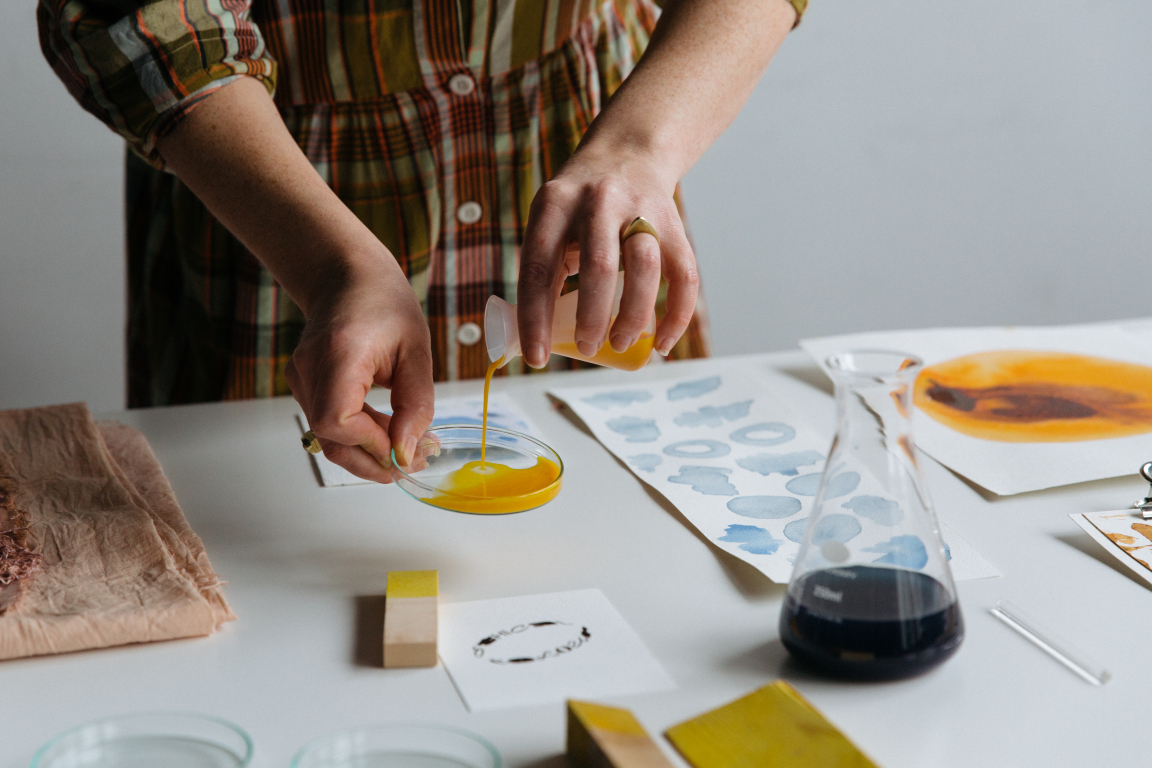
Photography by Sara Hibbert.
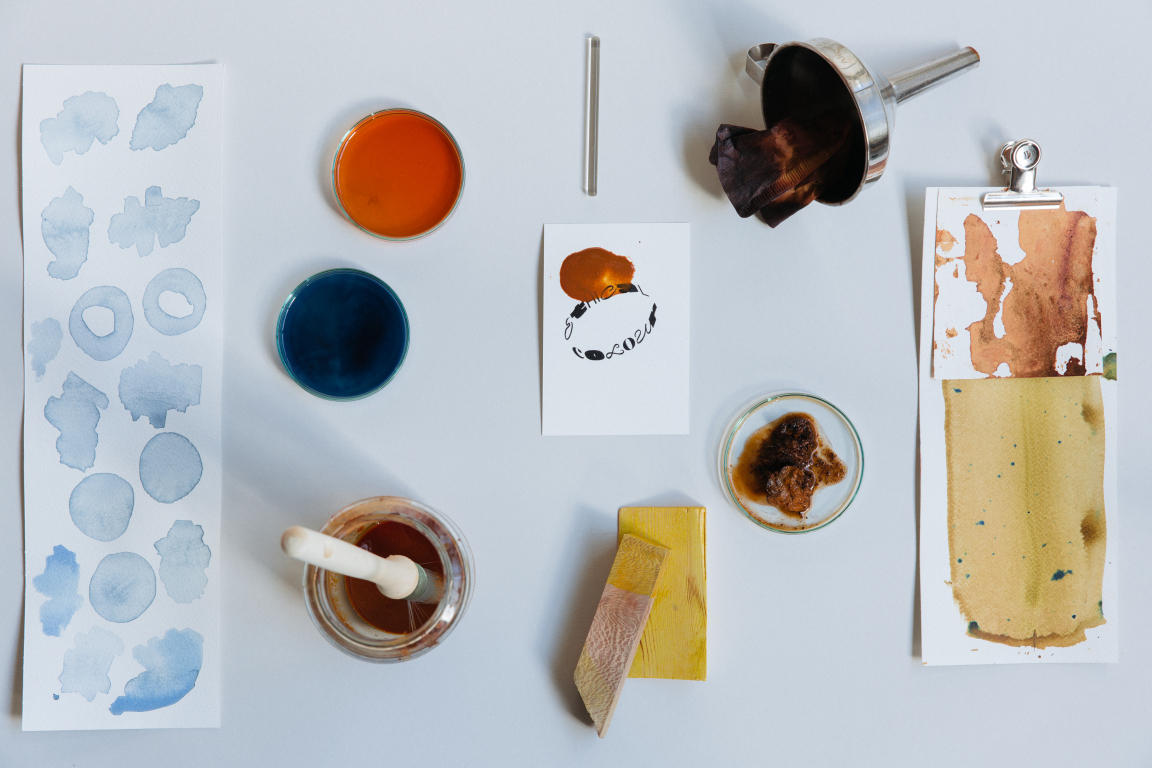
Photography by Sara Hibbert.
Firstly, could you please describe your recently released project, Ethical Colour?
“Yes, Ethical Colour is a piece of interactive annual research that we at Colour of Saying have just put together. It covers an in-depth dive into how ethics and responsibility have become parts of design decision-making – in this case, we’ve used colour as the lens. Highlighting holistic colour processes that respond with intelligence, sensitivity, and creativity to the ecological and social challenges we face, pointing the way to more interconnected ways to design and make.
“We challenged ourselves to make more circular colours. From origin to end of cycle, we worked with 8 progressive designers and colour makers to understand different perspectives and processes, in order to develop a tool kit for ethical decision-making for designers - as well as a set of extensive resources and industry takeaways.
“The Ethical Colour Project is multifaceted and collaborative-seeking, aimed at designers and creatives through a digital insights report and toolkit we’ve just launched and anyone can buy. We also conduct workshops and exhibition experiences which can be commissioned, most recently brought to a 120-strong audience in the US for clients – The Color Marketing Group (CMG)”.
Was there a specific moment in your career as a CMF designer that you discovered a need for a responsible framework for climate-positive colour?
“I’ve worked in the CMF industry for over 15 years, choosing visual identities and value propositions for a raft of mass manufactured products and spaces based on mood, aesthetic qualities and user experience preferences.
“After a few years, I found myself increasingly being asked for responsible or less-impactful material choices. I saw patterns emerge from clients and projects trying to use recycled materials, post-consumer polymers or industrial waste excess materials. However what I found, and still am finding, is that the whole product cycle and its interconnected impact was rarely looked at or considered. The need to understand circularity from traceability to application and end of use is so important now and for the future.
“Design is a partner of every part of these steps or processes, leaving designers and manufacturers with a great deal of ethical responsibility. I now help create visual identities that are based on purpose-driven concepts, circularity, colour psychology and meaning”.
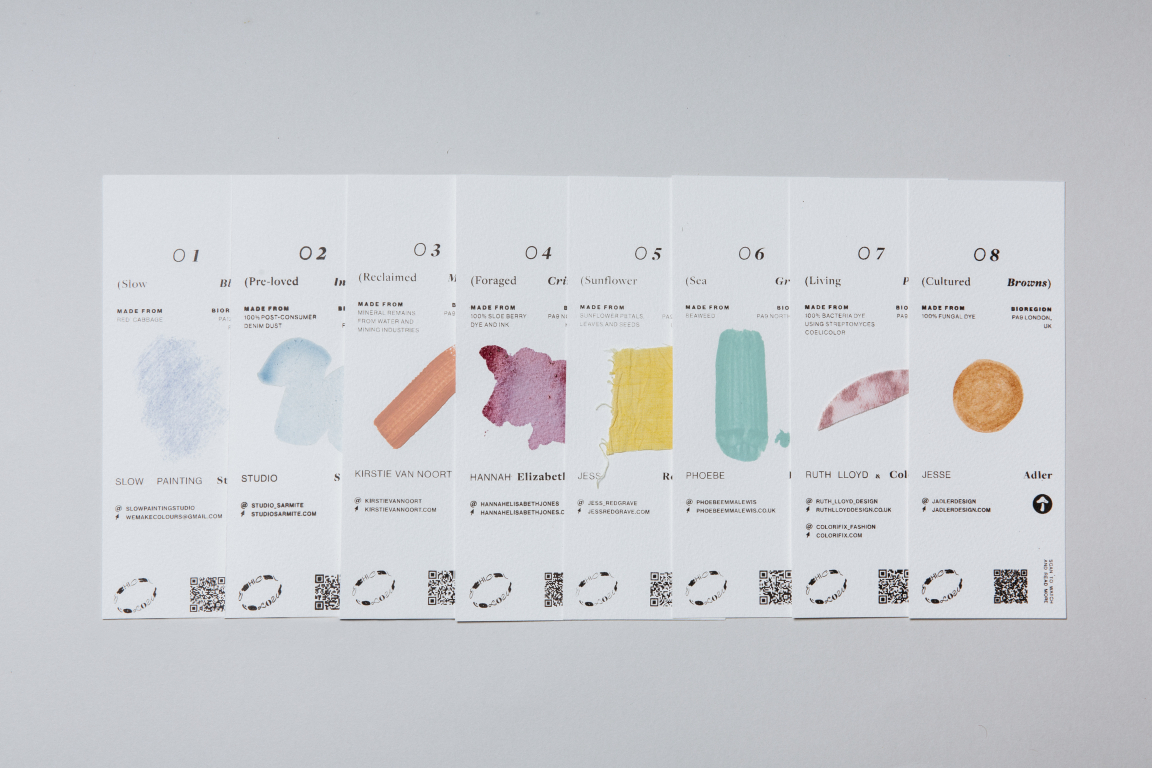
Photography by Sara Hibbert.
Could you please tell us how you arrived at 8 colour conscious directions for the project?
“I research colour rigorously and the forms and applications it takes. After writing The Colour Bible book and unearthing over 100 colours in Art & Design, I found many colours are indeed made from matter and materials. Through research, I began identifying emerging technologies that were pushing new forms of colour – such as lab-grown bacteria or fungi-based dyes.
“Lots of these initiatives take ethics to the next level looking at the ecological but also social implications of harvesting natural materials or bio-based materials to make colour. Really the colour tones and hues are serendipitous – I wanted to show a spectrum of choice which I know is opening up as we discover more”.
How might implementing an ethical colour palette bestow a range of physiological and psychological benefits to the end user?
“Not only do natural (non-chemical based) colour and materials have an immediate impact on of physical health – the tones produced have emotional benefits too. From a fundamental point of view, we are not exposing ourselves to VOC’s and synthetic waste consequences.
“On top of this, natural colour is more soothing to look at and experience. Softer organic tones (but not necessarily muted) or those with hue and variance, have a tactile and therefore emotional quality we can all engage with”.
When the colours we use are ethical and regenerative ones, we can trust our intuitive responses to made objects and environments and allow colour to naturally guide us away from harm and towards healthy experiences. - Sarah Conway, co-editor
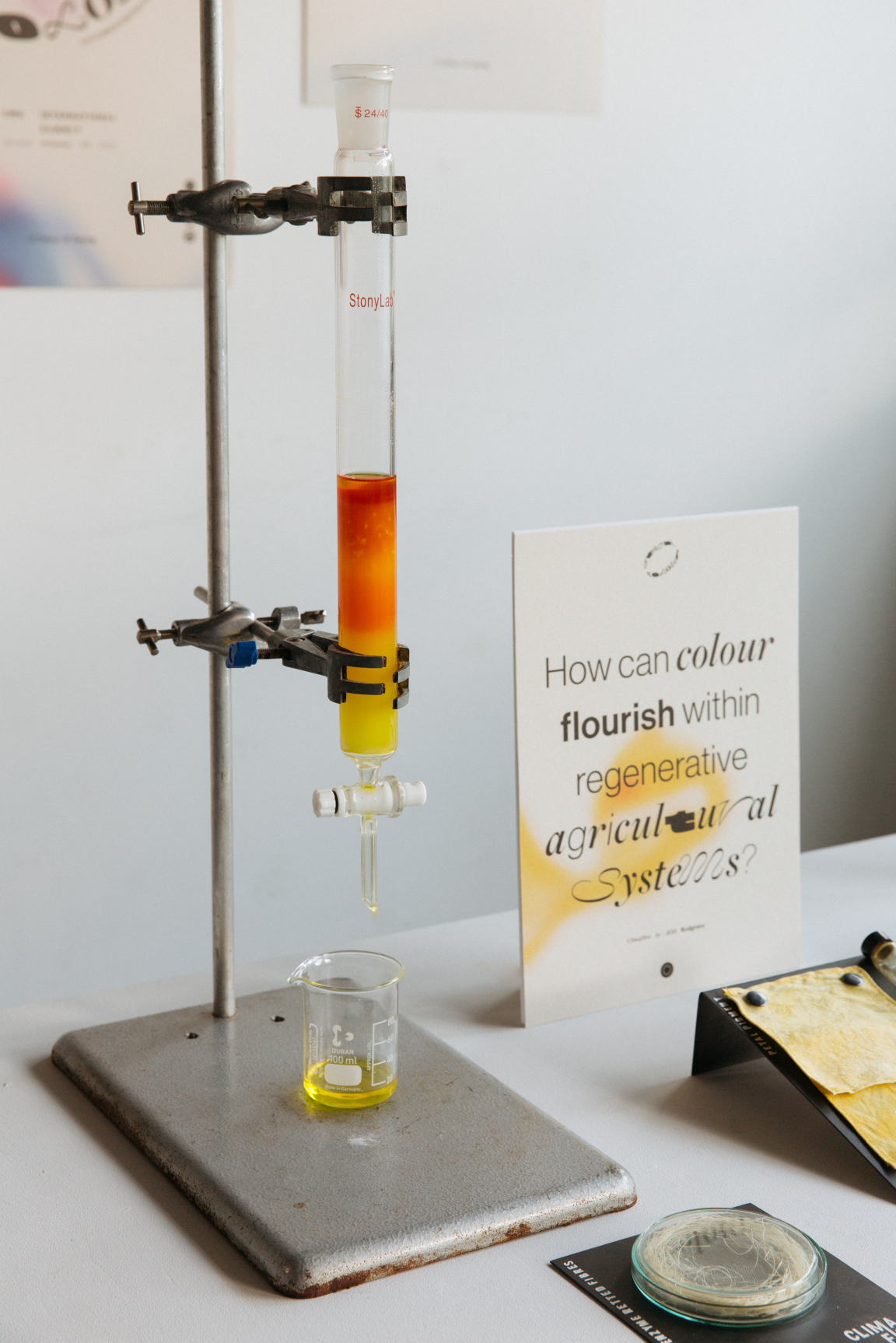
Featuring Sunflower Yellows by Jess Regrave. Sara Hibbert photography.
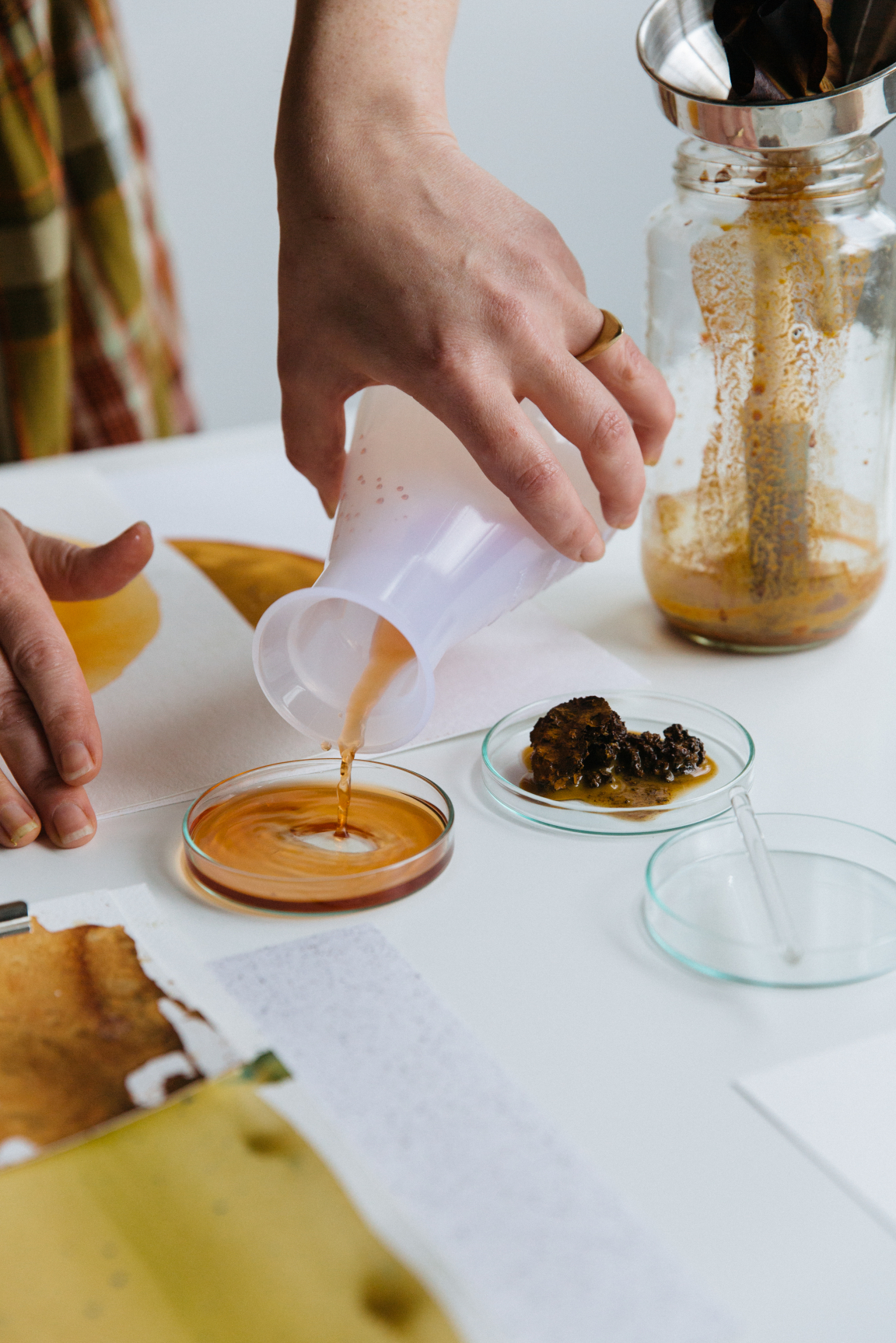
Photography by Sara Hibbert.
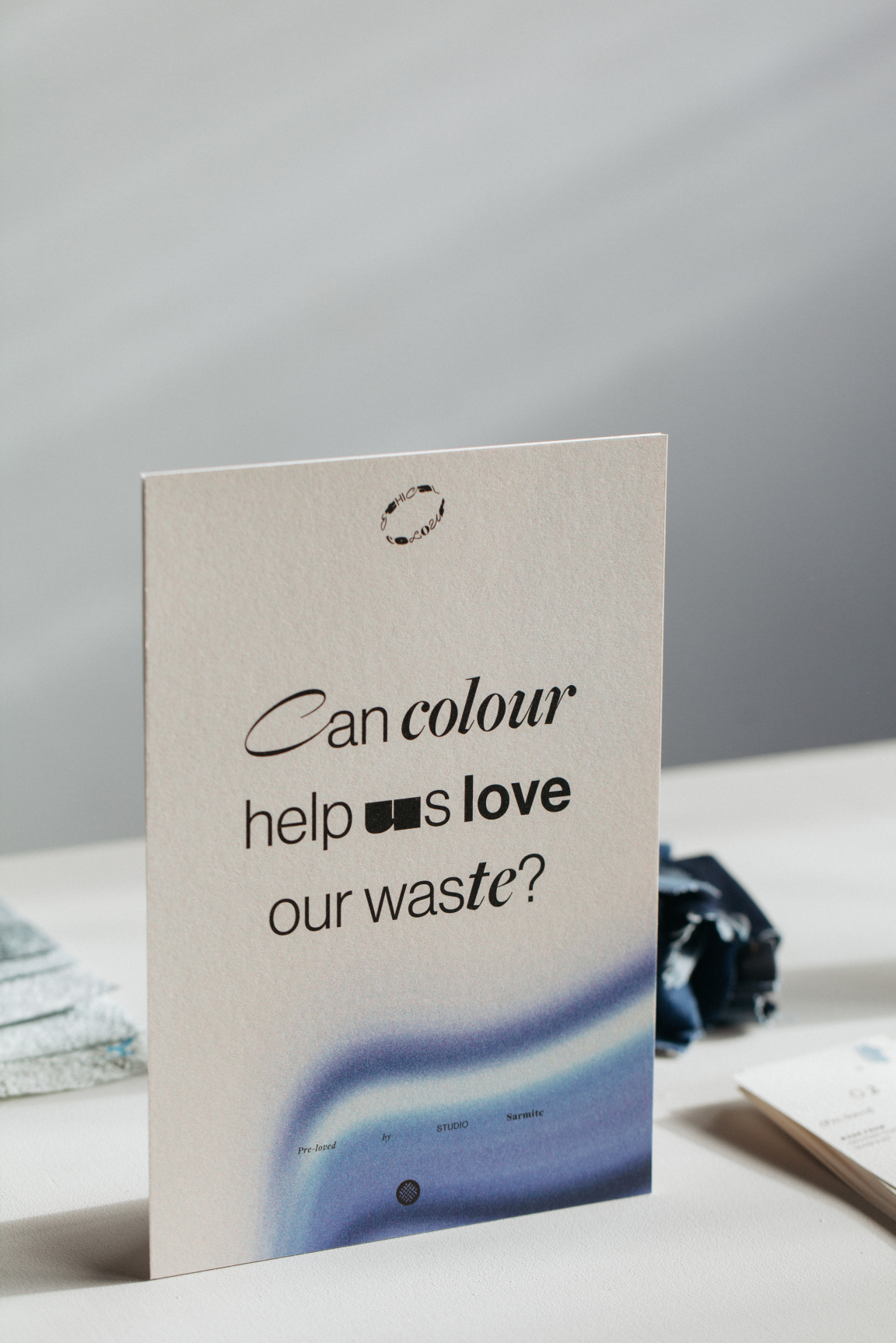
Photography by Sara Hibbert.
When working with natural, bio-based colour and recycled content, some will naturally become more or less available depending on location and season. How might you advise designers and manufacturers to embrace or overcome this?
“I advise not to hide or cover up batches that are inconsistent for colour but develop to a new strategy. This is a big leap for many industries to take who have been fabricated on brand colours or delivering colour consistency for years.
“There are fresh opportunities here - such as exploring colours made within a small footprint of your production area that make sense to your brand. Smaller batches of colour can also be applied responsibly in limited edition scenarios”.
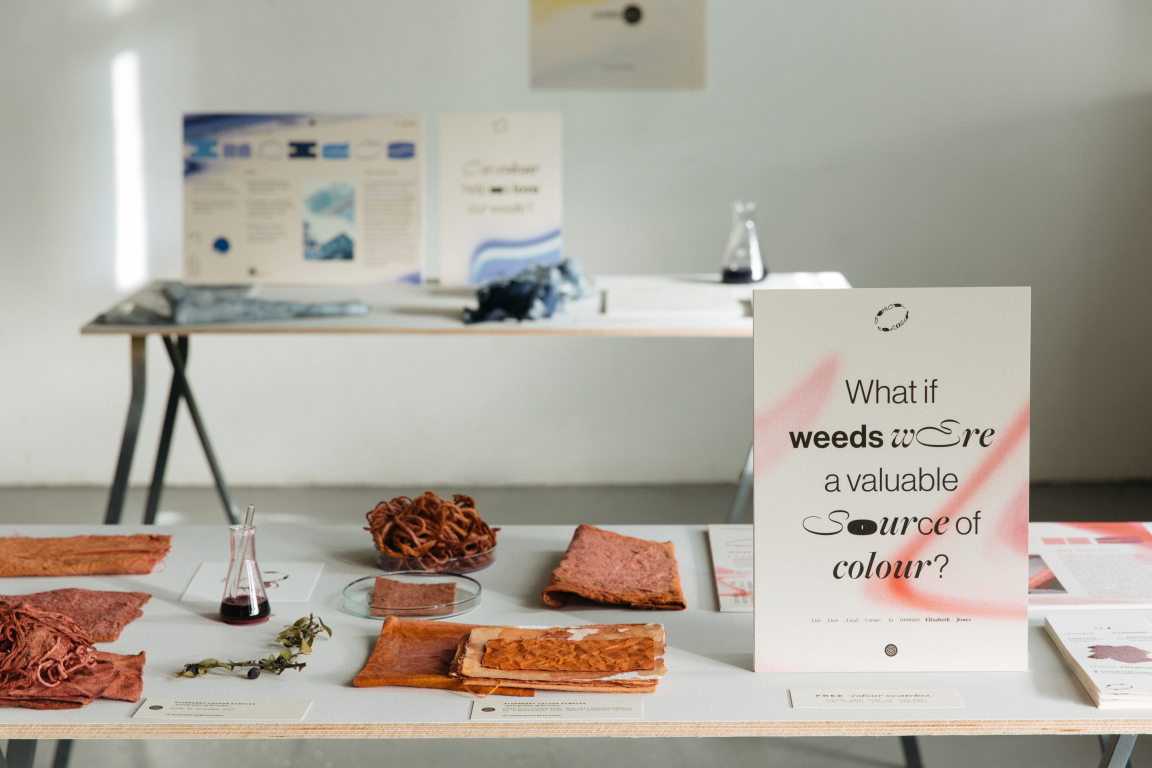
Foraged Crimsons by Hannah Elisabeth Jones. Photography by Sara Hibbert.
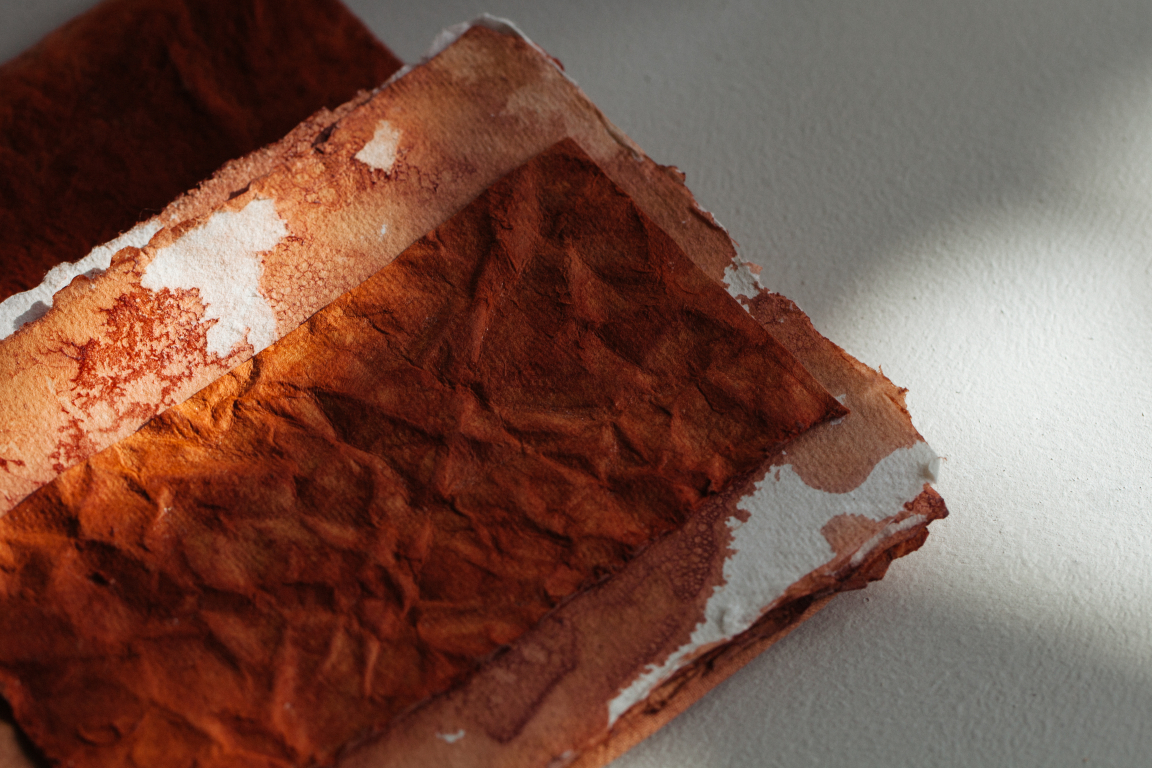
Foraged Crimsons by Hannah Elisabeth Jones. Photography by Sara Hibbert.
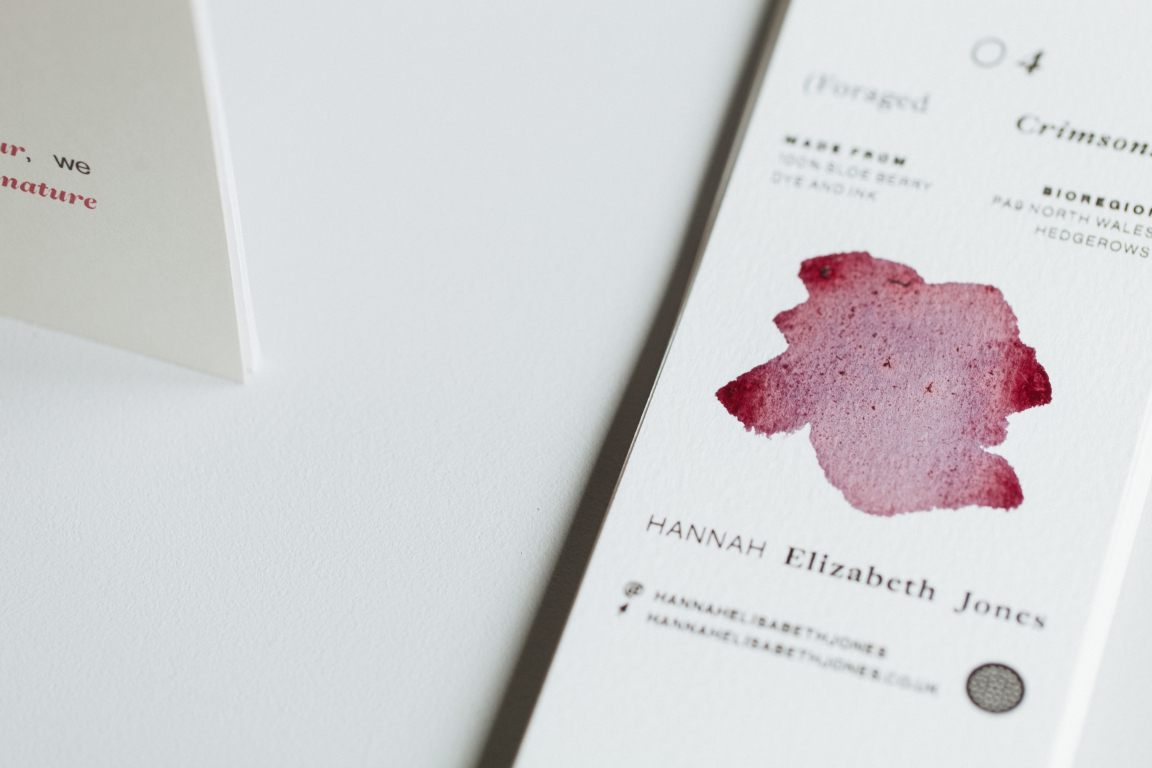
Foraged Crimsons by Hannah Elisabeth Jones. Photography by Sara Hibbert.
Over time we need to learn to phase out virgin synthetic colour and materials from all manufacturing processes. This sounds bold but we must adopt a new mindset.
Could you please talk us through what the lifecycle of a ‘circular colour’ may look like?
“Yes, the 8 chosen colours in the research all take a unique approach to colour and circularity. It’s important to also note, there is not one perfect circle or cycle, but a range of methods. It’s key to think and design holistically by questioning impact at every stage.
“Starting with a mindset of keeping your product in use for as long as possible by designing away from short-term trends and towards timelessness, durability and reuse is the first step to colour circularity. Also, considering the context and benefits of the colour and its impact on health and wellbeing not just psychological but physiological will be essential.
“The first is colour origin - it’s important to know where, when, how and of what a colour or material is made. If we don’t know any of this it can’t be ethical or transparent at the start.
“Process is the next step, considering how we harness the colour from the material and work with all by-products efficiently lowering waste and energy.
“In Use is where as designers, we pass on the colour to the customer or client, here considering how the colour or material (perhaps in its second or third life) makes its way back entering the origin point or, being naturally disposed of is critical for circular design to thrive.
“More detailed steps and solutions can be found in the report”.
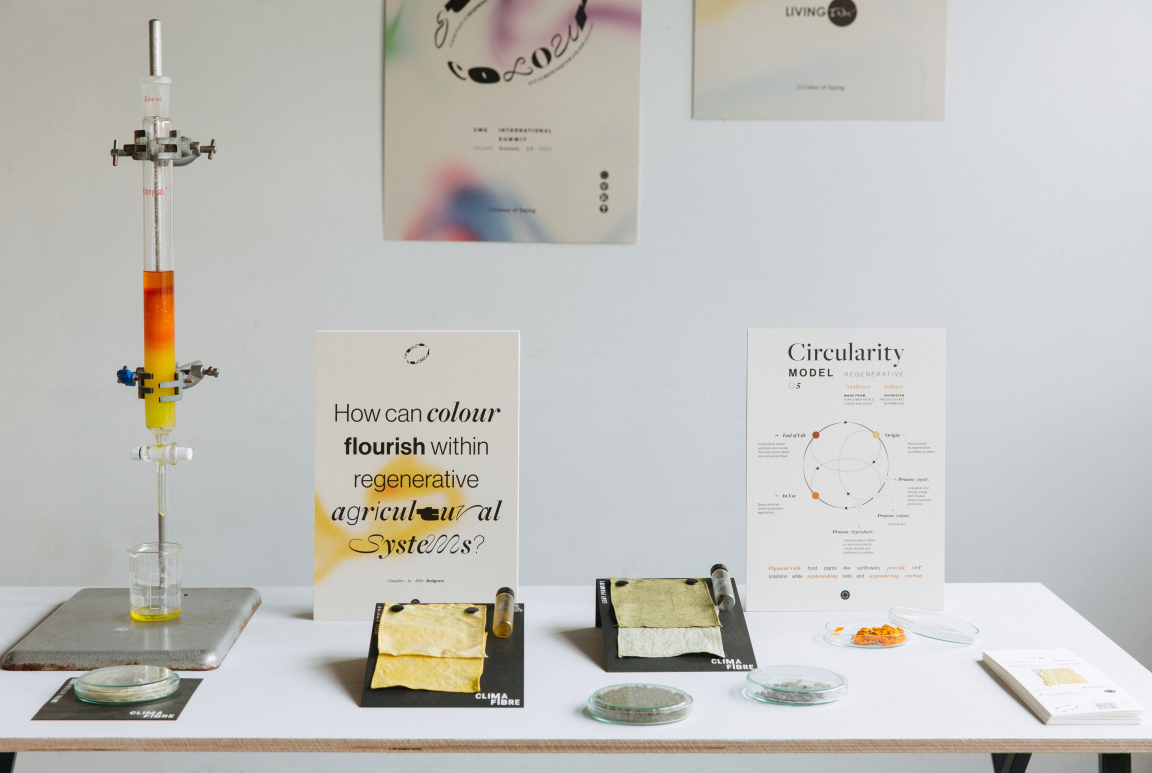
Featuring Sunflower Yellows by Jess Regrave. Photography by Sara Hibbert.
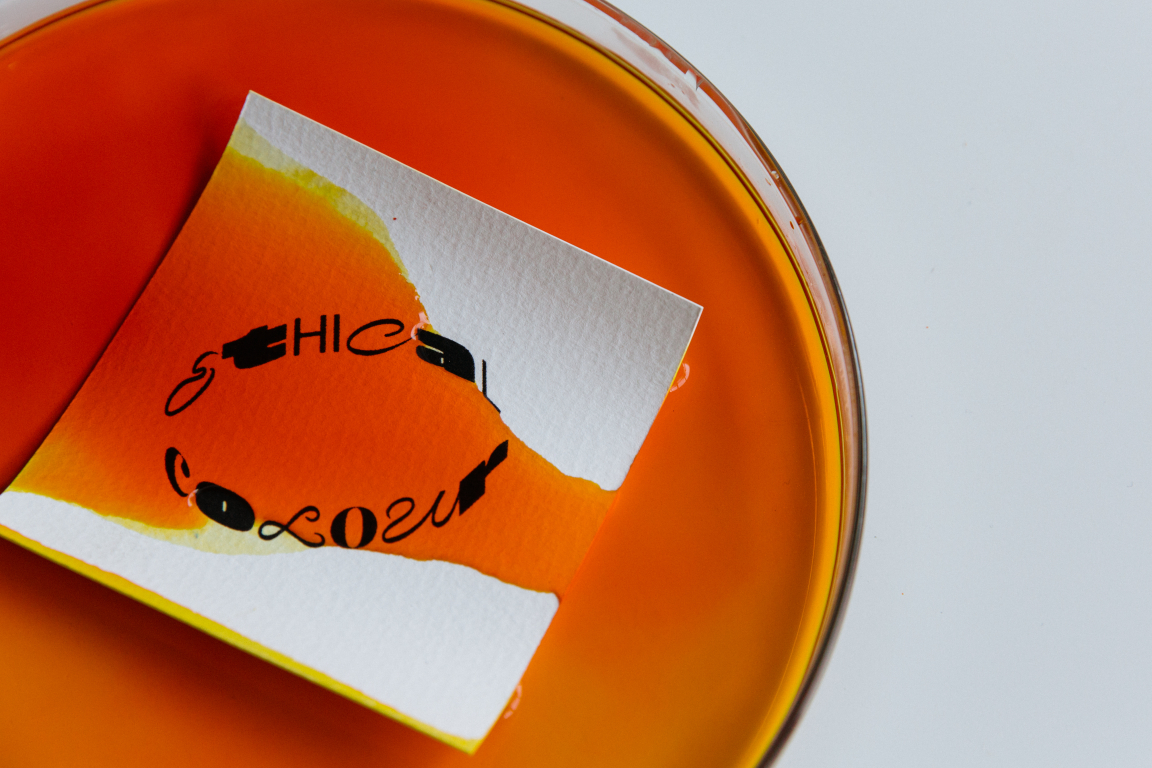
Photography by Sara Hibbert.
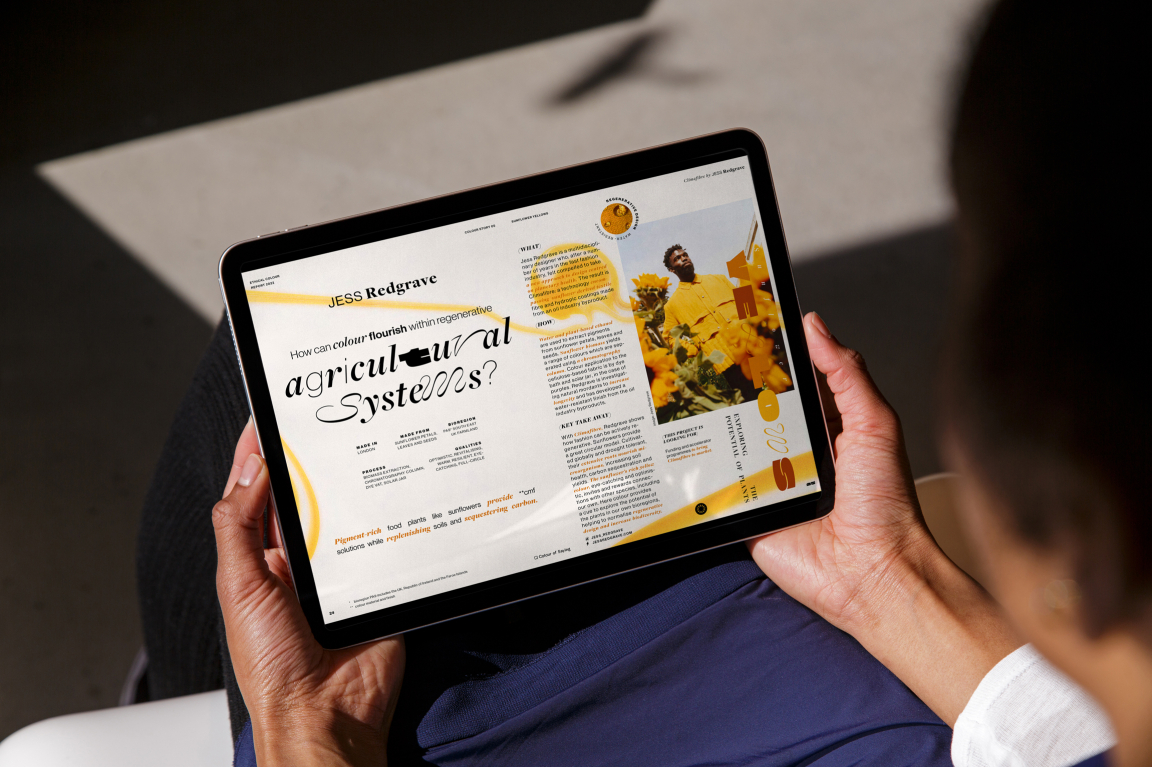
Featuring Sunflower Yellows by Jess Regrave. Photography by Sara Hibbert.
How might we see colour being recycled within different industries in the future?
“Currently, the textile and fashion industry is leading in some ways, with fresh approaches to fashion waste and colour. There are suppliers creating dyes just using textile recycled waste itself, taking the fibre and the pre-existing colour and creating second-life pigments and dyes”.
Ethical colour promotes an inspiring spectrum of colour derived from regenerative and natural sources, some of which are likely to be susceptible to external factors - such as UV and pH levels. How can we encourage brands and mass manufacture away from a focus on fixed colour?
“Over time we learn to phase out virgin synthetic colour and materials from all manufacturing processes. This sounds bold but we must adopt a new mindset. I think in some industries such as fashion and textiles this could be more achievable, but it must be made possible in other industries too.
“I would advise to embrace a designed-to-fade aesthetic as part of the design identity by working with an entirely natural colour source. Qualities such as UV and lightfastness can be harnessed to create positive colour variation.
“I would also suggest reincorporating your brand colour waste into new collections, combining shades or materials in intentional and serendipitous expressions”.
Could you please share some of your industry favourites with us that are already employing an ethical approach to colour?
“Well, straight from the report, where innovation meets industry is where the most progressive work is happening. Science and bio-tech are certainly pushing on ethical colours. Colorifix is the leading manufacturer for biological and bacteria-based dyes for the textile industry. To replicate a shade created naturally by an organism like streptomyces, Colorifix identifies pigment-producing genes using DNA sequencing and translates their code into engineered microorganisms.
“With little damage and waste – this system of dye production and application based on natural fermentation, can be easily cultured, and transported to micro-production labs. There are many others in the report too”.
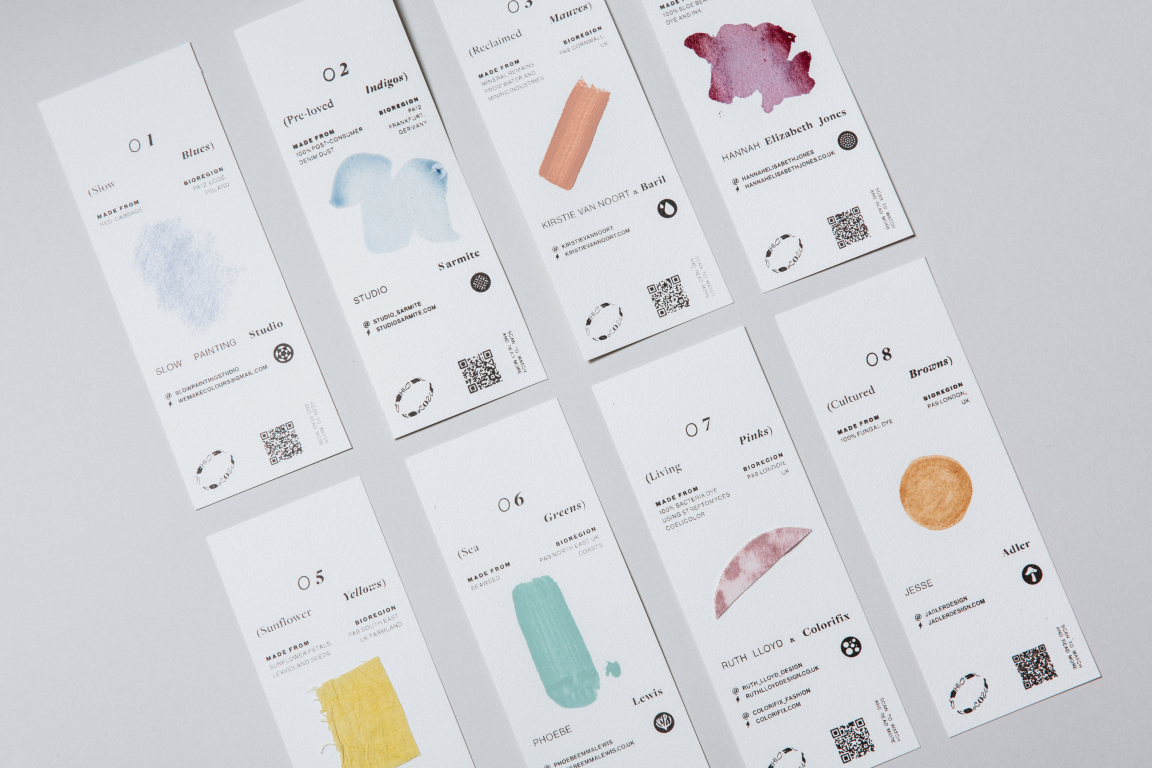
Photography by Sara Hibbert.
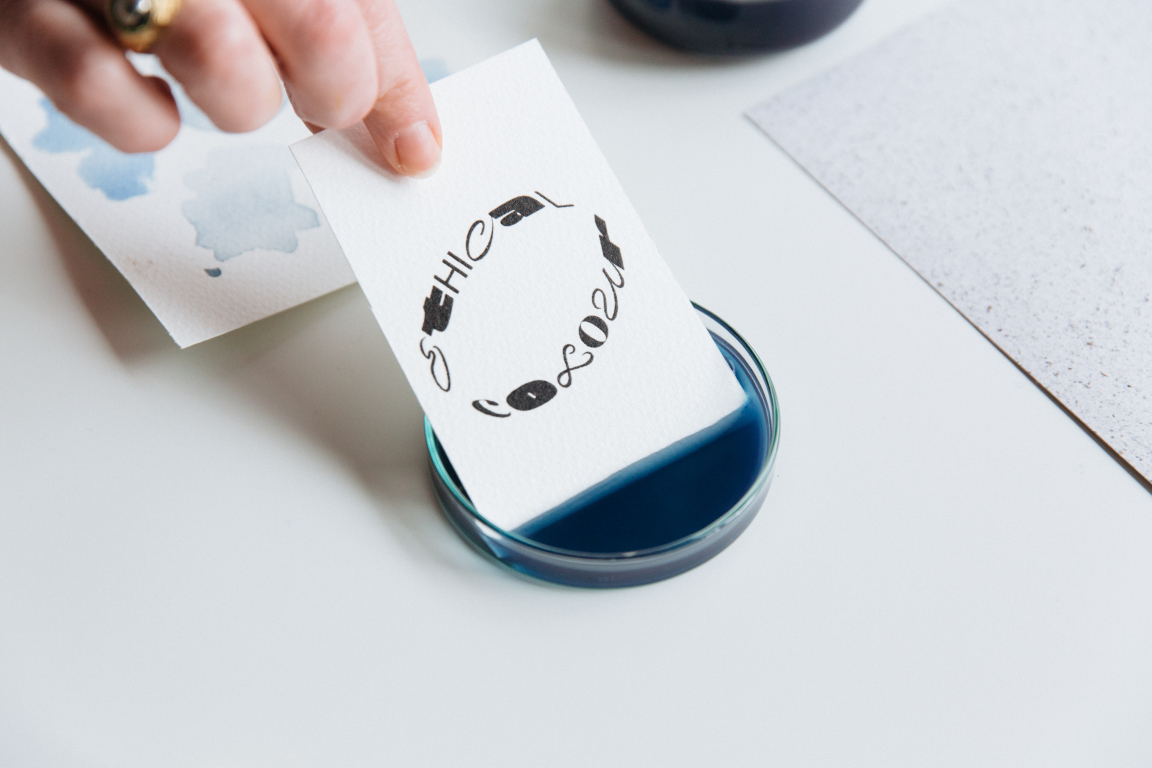
Photography by Sara Hibbert.
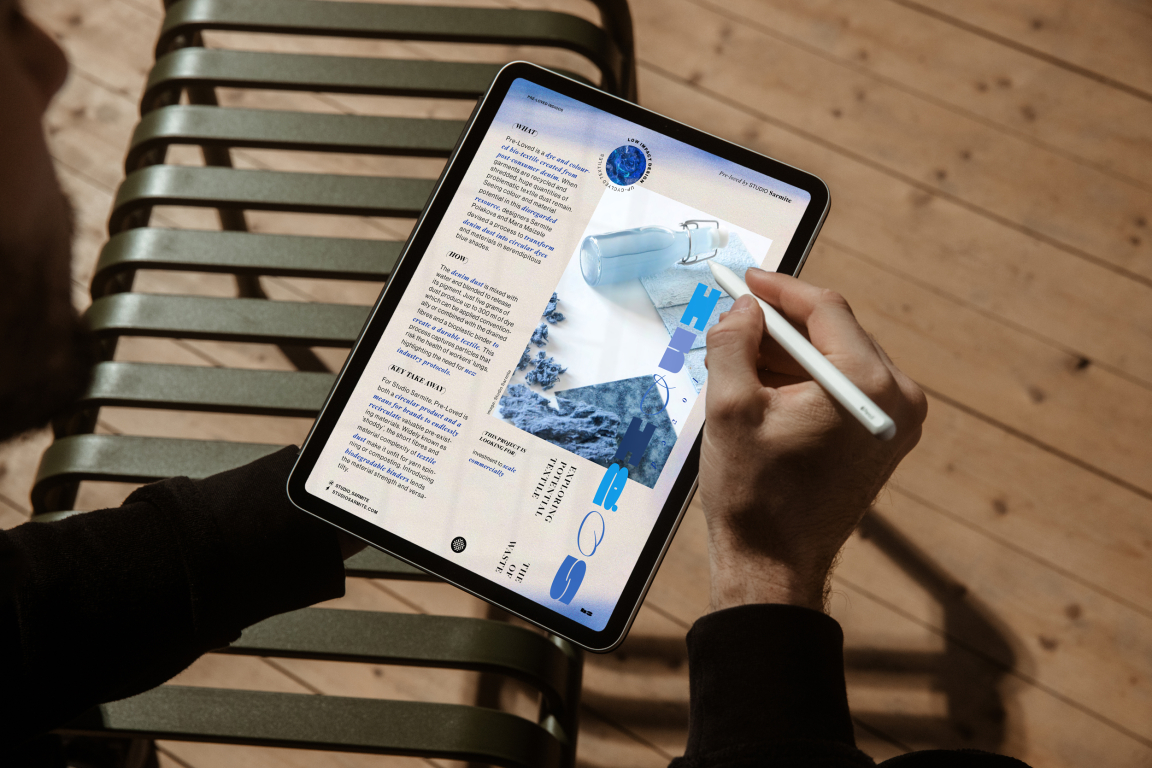
Featuring Pre-loved Indigoes by Studio Sarmite. Photography by Sara Hibbert.
Could you please talk us through some of the design deliverables important to communicating these 8 bodies of responsible hues?
Graphic designer for the Ethical Colour report, Laura Boast puts forward the answer for this one: “The deliverables for this pioneering body of work included brand identity, typographic styling, iconography, sample colour swatches, printed envelopes, exhibition posters, infographics and a digital report. Part of the report discusses how responsible choices can be mapped to circular frameworks; having a circular logo felt like a natural choice.
“Using various typefaces helps to emphasise Ethical Colour’s multifaceted nature. Eight characters (E T C A O L U R) are set in Nostra Stream and Nostra Sett as a reference to eight different points of view and approaches.
“The colour backgrounds were manually blended and blurred using photographs of each colour projects, which resulted in varying hues that seamlessly matched the photographs within the report”.
Finally, what’s next for Ethical Colour?
“As we have just launched the full digital report - we are looking to bring these insights to design teams and organisations through Circular Colour Framework workshops and talks, as well as develop a programme of public workshops and exhibitions that reveal some of the colour processes, we can all get our hands on to make ethical and circular palettes.
“Now we are looking for further opportunities to bring the interactive research to public settings as a display or collection so we can open up further discussion and learning”.
Access the Ethical Colour Report and purchase the toolkit to learn more about this pioneering body of work
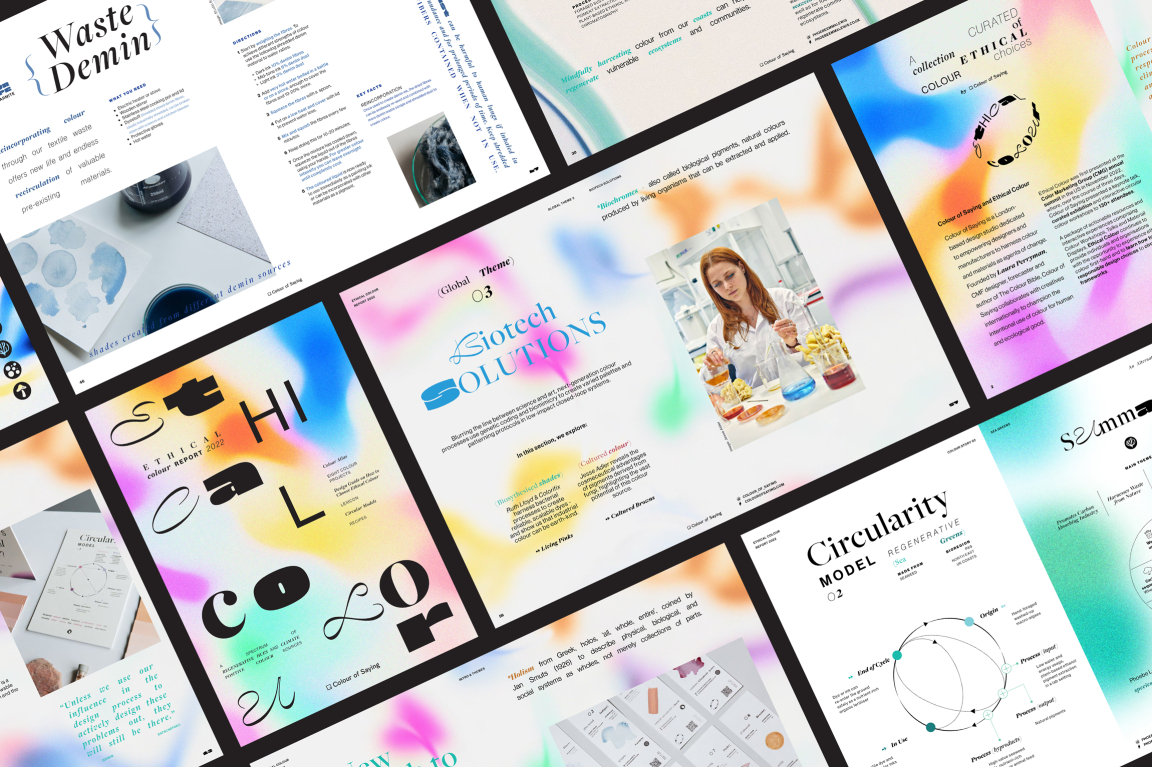
Photography by Sara Hibbert.



